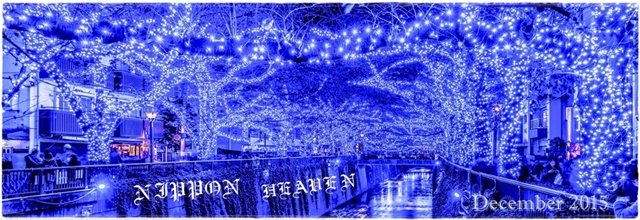Harajuku (原宿 "meadow lodging") About this sound listen (help·info) is the common name for the area around Harajuku Station on the Yamanote Line in the Shibuya ward of Tokyo, Japan.
Every Sunday, young people dressed in a variety of styles including gothic lolita, visual kei, and decora, as well as cosplayers spend the day in Harajuku socializing. The fashion styles of these youths rarely conform to one particular style and are usually a mesh of many. Most young people gather on Jingu Bridge, which is a pedestrian bridge that connects Harajuku to the neighboring Meiji Shrine area.
Harajuku is also a fashion capital of the world, renowned for its unique street fashion. Harajuku street style is promoted in Japanese and international publications such as Kera, Tune, Gothic & Lolita Bible and Fruits. Many prominent designers and fashion ideas have sprung from Harajuku and incorporated themselves into other fashions throughout the world.
Harajuku is also a large shopping district that includes international brands, its own brands, and shops selling clothes young people can afford.
Harajuku is an area between Shinjuku and Shibuya. Local landmarks include the headquarters of NHK, Meiji Shrine, and Yoyogi Park.
The area has two main shopping streets, Omotesandō and Takeshita Street (Takeshita-dōri). The latter caters to youth fashions and has many small stores selling Gothic Lolita, visual kei, rockabilly, hip hop, and punk outfits, in addition to fast food outlets and so forth.
Omotesandō has recently seen a rise in openings of up-scale fashion shops such as Louis Vuitton, Chanel, and Prada. The avenue is sometimes referred to as "Tokyo's Champs-Élysées". Until 2004, one side of the avenue was occupied by the Dōjunkai Aoyama apāto, Bauhaus-inspired apartments built in 1927 after the 1923 Kantō earthquake. In 2006 the buildings were controversially destroyed by Mori Building and replaced with the "Omotesando Hills" shopping mall, designed by Tadao Ando. The area known as "Ura-Hara", back streets of Harajuku, is a center of Japanese fashion for younger people—brands such as A Bathing Ape and Undercover have shops in the area
Harajuku as it is now traces its roots to the end of World War II during the Allied occupation of Japan. U.S. soldiers and government civilians and their families lived in a nearby housing area called Washington Heights. It became an area where curious young people flocked to experience a different culture and stores in the area stocked goods marketed towards middle and upper class Japanese and Americans.
In 1958, Central Apartments were built in the area and were quickly occupied by fashion designers, models, and photographers. In 1964, when the Summer Olympics came to Tokyo the Harajuku area was further developed, and the idea of “Harajuku” slowly began to take a more concrete shape.
After the Olympics the young people who hung out in the area, frequently referred to as the Harajuku-zoku, or the Harajuku tribe, began to develop a distinct culture and style unique to different groups and the area. From this distinct style grew the culture of Harajuku as a gathering ground for youths.

